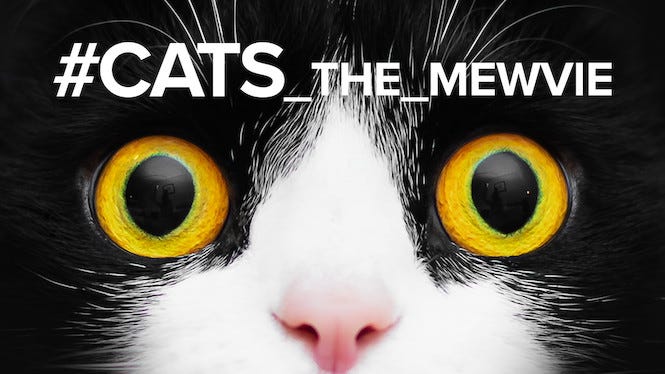#4: Wandering the Web
+ How the Internet is a dog park, but for cats.
Welcome to the Civic Signals newsletter, a project dedicated to how to build better public digital spaces. If you’re already receiving this email, please share with your friends so we can build a bigger community.
Finding wonder online, again
“The magic of the street is the mingling of the errand and the epiphany.” - Rebecca Solnit, Wanderlust: A History of Walking

(Photo: spurekar/Flickr)
During quarantine, one of the biggest challenges of retreating from life in a city to work from home is finding healthy forms of stimuli. Even with phones in our pockets, it’s easier to wander around free of purpose out in an urban environment than it is on the internet. Eavesdropping on people in coffee shops, feeling the rumbles of trains and buses, tracing the lines of a building—these are all the noise and sights you can’t quite wander into on the web.
Confined to our apartments, a few online recommendations have sprung up to imitate that outside world—a soundscape generator for productive white noise, Instagram dance parties, a watch-it-together Netflix app. But this imitation can feel flat, not just because its conveyed by screens, but it also lacks serendipity. As this crisis lets our average screen time rocket and isolation threatens mental health, we’re rethinking how the web can better connect us.
The earlier internet that I remember in the 2000s did not feel like the constant barrage that social feeds create now. Instant message chat rooms substituted for hanging out after school with the same friends. Forums provided a small club to check in on. Webcams could take you anywhere in the world to people watch (although those cameras now point to empty public squares, the animal cams are still delightful). It was ephemeral, but the connections were authentic.
With a new desire to be in the same place with someone online, new tools are emerging, even when you can’t block out the time for a long video chat. Downloads of video messaging apps have spiked during lockdown. I can speak from experience how the Marco Polo app has given my family the ability to send goofy cat videos across an ocean to my youngest sister studying abroad in Scotland. Or if you miss talking with strangers, there’s Quarantine Chat, where you can subscribe to periodic calls with random people.
Other people are using old tools to make what we might bump into in the real world, putting on live streams to teach yoga, draw pictures, or throw concerts. As we dig deeper on the web to find more than the overbearing top news story, with less of the web’s do-it-yourself ethos and more of a do-it-together friendliness, hopefully we can get back to some of the everyday online and feel surprised again.
What’s clicking
How has your state reacted to social distancing? Smartphone data tells us - New York Times
Libraries are getting books into people’s hands, virtually - Next City
Density is normally good for us. That will be true after coronavirus, too - New York Times
Personal voice assistants struggle with black voices, study shows - The Verge
The pandemic is driving media consumption way up. But ad sales are falling apart - Recode
Get a load of how empty New York is right now, by bike - Streetsblog
Quoteworthy
Traditionally, people are best at constructing those relationships face-to-face, but nowadays people have been finding ways to create that same kind of connection virtually… To me, that is the challenge for organizers: How do organizers learn to draw power from relationships created online?
— Hahrie Han, political scientist at Johns Hopkins University, to Kara Voght at Mother Jones, “Democrats Promised a Door-Knocking Army in 2020. The Pandemic Has Changed Their Plans.”
Fur your entertainment

(Netflix)
If you’re scrambling for something to take your mind off anything have to do with the current moment, we have a Netflix recommendation for you: #Cats_the_Mewvie, a documentary released earlier this year about how cats became online icons. Before you claw at us for what this could possibly have to do with building public friendly spaces, just hear us out. The documentary traces how cats took over the aesthetics of the internet, from the start of the long running Infinite Cat Project in 2003 to the triumph of LOLcats memes to the rise of celebrity cat accounts, including Lil Bub and Cats of Instagram.
In addition to the lineup of cat content creators, the movie interviews experts on internet trends and culture working at YouTube, Instagram, and Tumblr about why cat content is so popular, how their behavior crosses cultural boundaries, and where cats have formed an aesthetic and sometimes became art online. “In the world of cats, there is no dog park; For cat owners, the dog park is the Internet,” the now-common saying about the online cat community goes. But how cats took over the internet has a much to do with how platforms develop through their users, BuzzFeed writer Jack Shepherd describes how content develops from the initial noise of people authentically trying to figure out what to do into a more-polished consumable product as a “gentrification of the feed.” Take a look on Netflix.
See you soon,
Andrew Small
Civic Signals is a partnership between the Center for Media Engagement at the University of Texas, Austin and the National Conference on Citizenship, and was incubated by New America. Share this newsletter with your friends!

